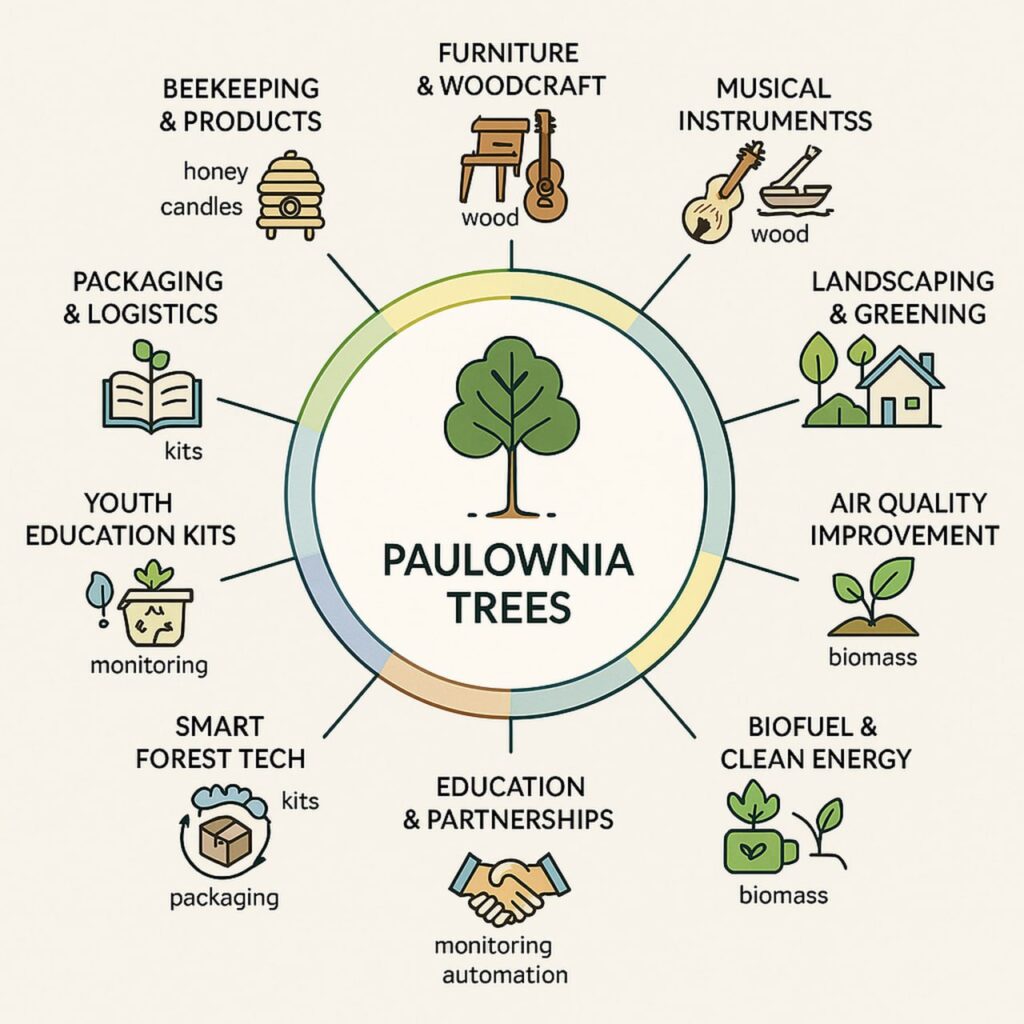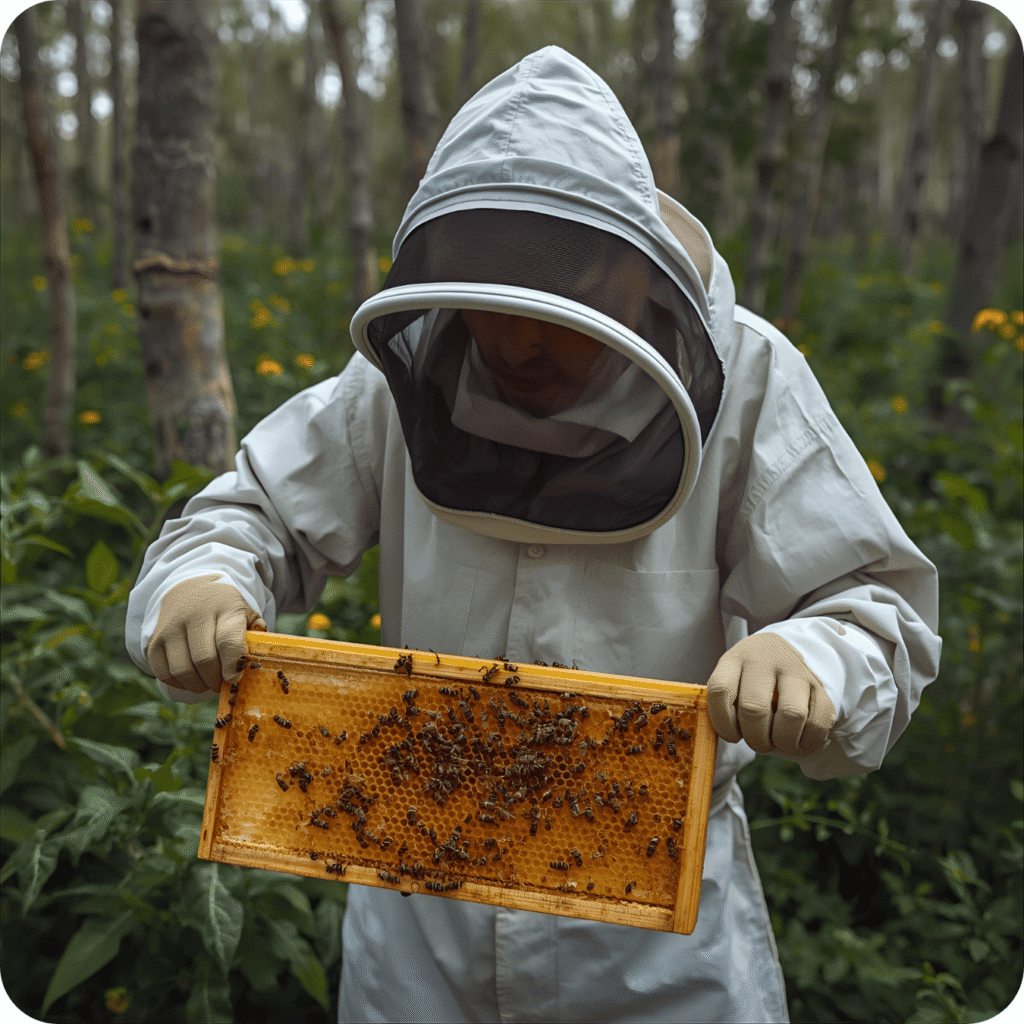One tree — countless ways to make our planet thrive.

Beekeeping & Products
Includes:
• planting Paulownia as a nectar-rich base for apiaries;
• organizing bee zones near plantations;
• producing honey, wax, and pollen;
• making natural candles, balms, and soaps;
• hosting “honey tours” and candle-making workshops.
Benefits: supports bees as pollinators, produces natural products, and promotes eco-tourism.


Furniture & Woodcraft
Includes:
• growing Paulownia for light, durable timber;
• collaborating with local artisans and furniture makers;
• teaching woodcarving techniques;
• creating designer and functional furniture;
• participating in fairs, exhibitions, and Etsy markets.
Benefits: eco-friendly material, creative craftsmanship, and support for local business.
Musical Instruments
Includes:
• supplying Paulownia wood to workshops for violins, guitars, and ukuleles;
• creating limited “eco-line” series of musical instruments;
• partnering with music schools and luthiers;
• promoting the connection between music and nature.
Benefits: niche market, high product value, and cultural contribution.


Boats & Lightweight Structures
Includes:
• using Paulownia as a perfect lightweight, water-resistant material;
• partnering with companies building boats and tiny homes;
• developing alternative solutions for camping and eco-tourism;
• prototyping structures for educational or research purposes.
Benefits: sustainability, new market potential, and eco-friendly transport materials.
Landscaping & Greening
Includes:
• planting trees in cities, schools, and parks;
• designing shaded alleys, yards, and public spaces;
• using Paulownia as a decorative and functional element;
• organizing community “green volunteer” programs.
Benefits: beautification, public engagement, and environmental aesthetics.


Air Quality Improvement
Includes:
• Paulownia absorbs up to 10 times more CO₂ than average trees;
• carbon offset projects;
• planting along highways and industrial areas;
• participation in corporate green initiatives.
Benefits: helps fight climate change and strengthens environmental reputation.
Soil Regeneration & Biomass
Includes:
• using leaves and sawdust as organic fertilizer;
• producing compost, peat, and mulch;
• improving farmland soil quality;
• selling by-products for agricultural use.
Benefits: circular economy, profit from natural waste, and soil restoration.


Biofuel & Clean Energy
Includes:
• processing Paulownia wood into pellets and briquettes;
• producing biochar and bioethanol;
• supplying renewable heating materials;
• building long-term partnerships with energy companies.
Benefits: energy independence, sustainable “green” fuel, and export potential.
Smart Forest Tech
Includes:
• installing soil moisture and temperature sensors for monitoring;
• setting up automated irrigation systems;
• using IoT (Internet of Things) devices to track tree growth;
• deploying drones for mapping and planting control;
• creating apps for data analysis and yield forecasting.
Benefits: introduces a technological and modern dimension to forestry, improving efficiency, sustainability, and innovation in environmental management.


Youth Education Kits
Includes:
• school kits with Paulownia seeds and step-by-step planting guides;
• educational booklets and videos about ecology, soil health, and bees;
• STEM modules where students grow seedlings and learn business principles;
• integrating environmental learning into school programs.
Benefits: promotes national and educational importance, invests in future generations, and proves the project’s social value beyond business.